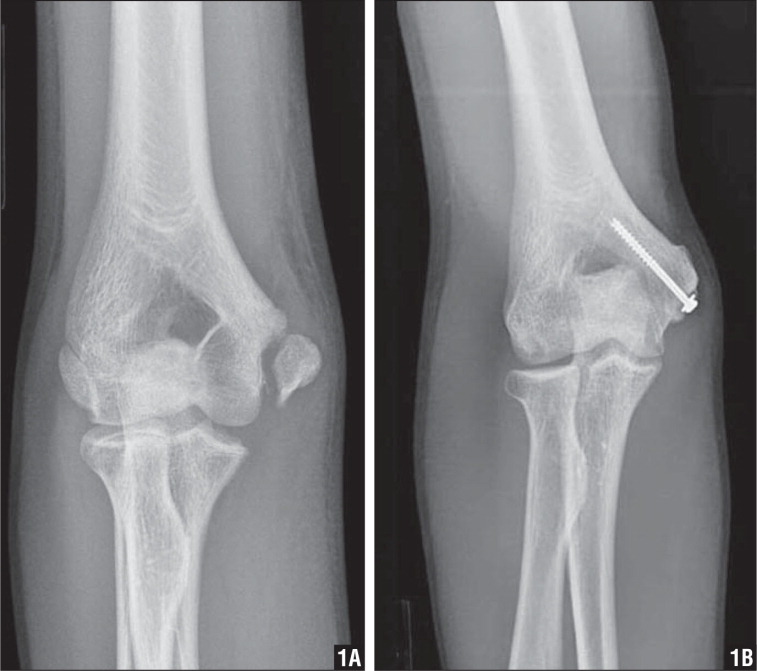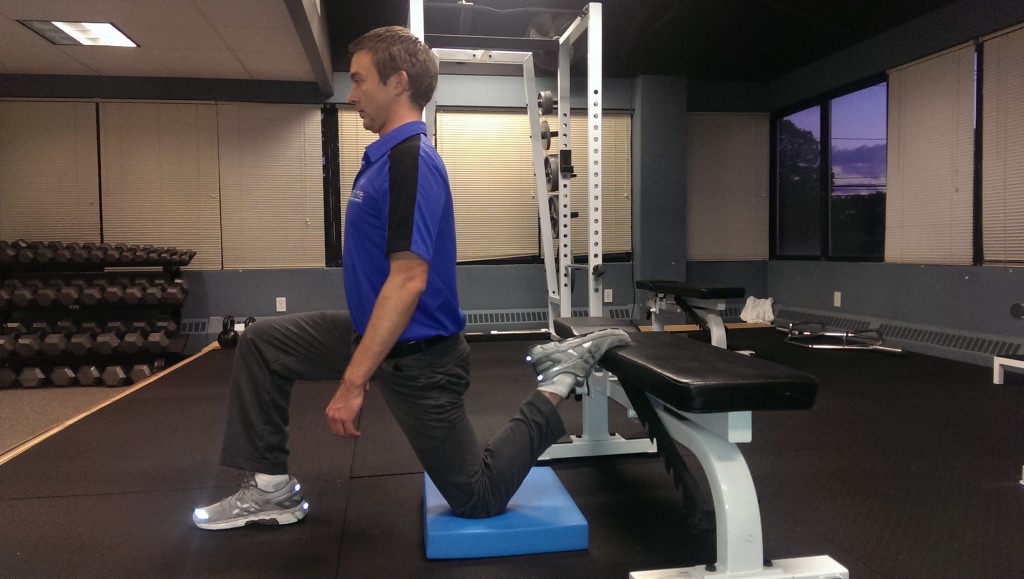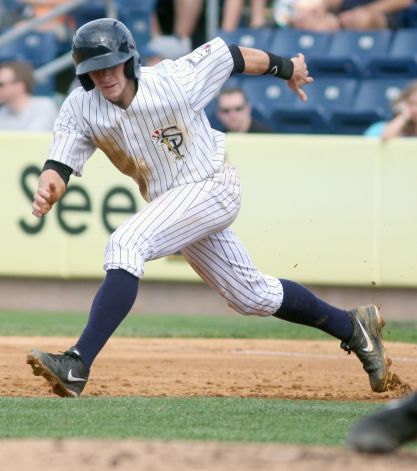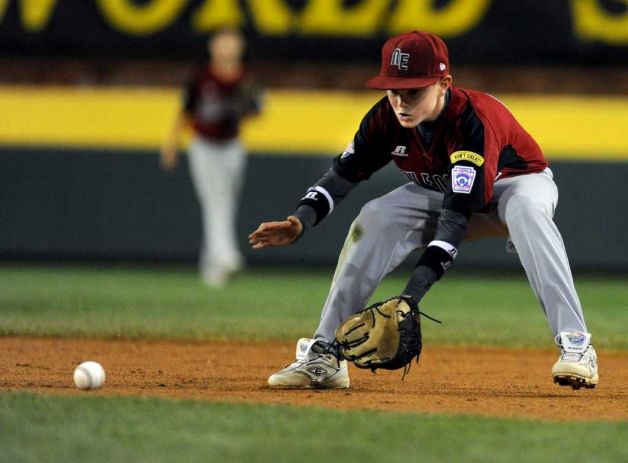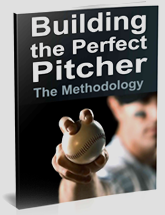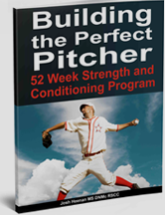Should My Son Play Fall Baseball?
Early specialization — the practice of playing a single sport for most of the year and foregoing the opportunity to play other sports — is an increasingly popular strategy in the United States. In my experience, this is especially true for baseball, gymnastics, hockey, and soccer. For parents of baseball players, the first question on the road to early specialization is often, “should my son play fall ball?” I offer the following thoughts to help answer this difficult question.
Little League Baseball

Before focusing on Little League baseball in particular, it is helpful to revisit the goals of youth sports in general according to Hedstrom and Gould:1
- Learning and developing physical skills
- Appreciating the value of fitness
- Building a sense of belonging among one’s peers
- Acquiring sport skill for leisure
- Stimulating physical and emotional growth
- Cultivating a sense of self-worth
- Developing social competence
- Building morals and personal integrity
- Learning to cope with failure**** Added by Josh
Little Leaguers experience morphing of the humeral joint (the bone that runs from the shoulder to elbow) as a result of the throwing motion. This adaptation becomes more significant as a player matures physically and begins to throw harder and more often. These changes in the arm lead to more external rotation of the shoulder, which in turn allows a player to throw harder as he gets older.2
A follow-up study questioned pitchers ten years after pitching in Little League. The researchers questioned the former Little Leaguers about injury, which was defined as elbow surgery, shoulder surgery, or retirement due to throwing injury. Pitchers who pitched 100 innings or more were 350% more likely to be “injured” than their counterparts who threw fewer innings in a years time. I would submit that all of these “injuries” were traumatic, as they either ended or directly affected the careers of the players in question.3
For simplicity’s sake, I will exclude the throwing variables caused by playing catcher, playing on multiple teams, throwing with friends, and participating in practices, scrimmages, and warm-ups from the following example. This example also assumes that a pitcher will throw six innings every three games, as this is the “normal” workload for a Little League pitcher.
Westport Little League:
- Spring Regular Season: 20 games or 40 innings pitched
- Summer District Play: 13 games or 26 innings pitched
- Summer Regional Play: 4 games or 8 innings pitched
- Little League World Series: 6 games or 12 innings pitched
- Total: 43 games or 86 innings pitched
Fall Baseball: 8 games or 24 innings (assuming a pitcher will throw 3 inn. a week)
Total: 51 games or 110 innings
To me, these numbers make clear that a Little Leaguer who pitches approximately six innings per week, plays competitively all summer and continues to play fall baseball will reach that 100 inning number and have a markedly higher risk for serious injury or ending their career.
High School
A study by Dr. James Andrews and his staff surveyed two groups of pitchers with an average age of 18. One group had no history of elbow or shoulder pain lasting longer than two weeks; the second group consisted of pitchers who had either shoulder or elbow surgery due to overuse from pitching. The pain-free pitchers averaged 5 ½ months of competitive baseball per year, while the group that required surgery averaged eight. The results of the study reveal that pitchers who pitch competitively eight months per year are 500% more likely to require shoulder or elbow surgery.
High school baseball pitchers in the northeast may have a slight advantage over their southern counterparts, as the seasons in the northeast are shorter (assuming the pitcher does not have access to a dome in the winter). Northeast baseball is normally played competitively for seven months — from April to August with fall ball in September and October — while southern baseball has virtually no offseason. Thus, the abbreviated season in the northeast protects pitchers from overexertion, while the clement weather in the south, though seemingly a blessing, exposes pitchers to a greater risk of injury.
But I need to play more baseball to get better!
Before worrying about a child’s improvement in a given sport, the child’s health and well-being must be considered. Especially in youth sports, parents and coaches have an obligation to monitor their athletes’ physical and mental health. Indeed, experts have observed that “early specialization is associated with a range of negative consequences affecting physical, psychological, and social development.”4 In addition to keeping athletes healthy, the goal of youth athletics should be to allow each player to fulfill his potential and play as long as he desires.
Even so, it is absolutely true that practice is necessary to progress and become elite in a sport. Scott Kaufman speaks on this subject in his book The Complexity of Greatness: Beyond Talent Or Practice.5
Kaufman also notes that children who play multiple sports are better “learners” because they can utilize their prefrontal cortex more efficiently than single sport youths. Experience in a variety of sports gives an athlete a larger “pool” of skills to draw on when attempting a new sport. One of my favorite examples of this is a former athlete of mine, Dave Boisture. Dave was an all-state quarterback who also played baseball and basketball in high school and eventually played outfield in college. Dave’s “pool” of athleticism was large because he was a stellar multi-sport athlete who learned to run, throw, jump, dodge opponents, adapt to field conditions, and play well under pressure. The following video shows Dave making an incredibly athletic catch while running up an inclined outfield in the high-stakes environment of an NCAA Regional Tournament game.
Dave’s holistic approach to baseball and sports in general was clear during our initial fall testing last year. During testing, each player receives a sheet to fill out which includes position. Dave wrote “athlete” instead of “outfield,” the expected response. Dave’s understanding of himself as an athlete, rather than merely a baseball player, allows him to employ the full array of athletic skills that he has learned over the years. This versatility in turn makes Dave indispensable to his team.
Final Thoughts
Besides the fact that the research shows a direct correlation with extra months of competitive baseball and a significantly higher surgery/drop out rate, I am not a fan of fall baseball in its current format. Normal seasons have players practicing and playing 4-6 times per week, while fall ball often has zero or one practice per week with two to four games on the weekend. Most kids don’t throw or prepare themselves for the games during the week, and take the mound as they would during their summer seasons. In my opinion, this lack of consistent practice and preparation during the fall season is dangerous regardless of the number of innings the pitcher has thrown in the spring and summer months.
I also object to the exploitative nature of many fall leagues. Before I receive all sorts of hate mail, please understand that I am speaking in generalizations and that I appreciate that many programs “get it.” However, I know for a fact that many leagues feel that fall ball is necessary to raise more revenue and make ends meet. I also know that many programs exploit this opportunity to tell players and parents that a kid must play fall ball to keep up with their peers and be considered for an organization’s spring or summer programs. Such programs do a disservice to their players not only ethically but also athletically, as this approach limits players’ athletic growth and increases their risk of career-ending injury.
The research presented in this post deals primarily with pitchers, but I recommend limiting all baseball players to competitive spring and summer seasons only. Playing other sports and practicing baseball skills on the side will allow an athlete to progress as much as early specialization, but it involves a much smaller risk of overuse.
Anecdotally, there is no question to what the correct answer is. Every professional baseball player I have ever worked with was a multi-sport stud in high school. In the rehab setting, I have seen an increasing number of injuries that correlate well to the research and are directly linked to fall baseball.
Related Articles
http://www.kevinneeld.com/2011/hockey-development-resistance
http://www.ericcressey.com/your-arm-hurts-thank-your-coaches
Citations
1. Hedstrom R, Gould D. Research in youth sports: Critical issues status. White Pap Summ Exist Lit. 2004. Available at: http://hollistonsoccer.net/image/web/coaches/CriticalIssuesYouthSports%20(2).pdf. Accessed October 9, 2013.
2. Mair SD, Uhl TL, Robbe RG, Brindle KA. Physeal changes and range-of-motion differences in the dominant shoulders of skeletally immature baseball players. J Shoulder Elbow Surg. 2004;13(5):487–491. doi:10.1016/j.jse.2004.02.008.
3. Fleisig GS, Andrews JR, Cutter GR, et al. Risk of Serious Injury for Young Baseball Pitchers A 10-Year Prospective Study. Am J Sports Med. 2011;39(2):253–257. doi:10.1177/0363546510384224.
4. Baker J, Cobley S, Fraser‐Thomas J. What do we know about early sport specialization? Not much! High Abil Stud. 2009;20(1):77–89. doi:10.1080/13598130902860507.
5. Ford PR, Hodges NJ, Williams AM. CREATING CHAMPIONS THE DEVELOPMENT OF EXPERTISE IN SPORT. Complex Gt Talent Pr. 2013:391.
5 Tips to Improve Your 60-Yard Dash

As discussed in the 60-Yard Dash: A Case Study post, the 60 is not the most applicable test of “speed” for baseball players, but it is one that will likely be around for a long time. The sprint has many qualities to be optimal; including power, strength, stability, flexibility, and plain old good movement. Without assessing someone for strengths and limitations here are 5 tips to improve your 60-yard dash.
1) Hip Flexor Mobility
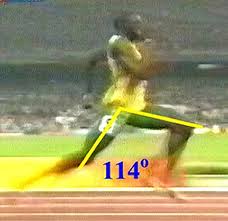 Hip flexors will often be tight and limit the amount of hip extension your leg can get. Increasing hip extension will allow you to naturally increase your stride length. If you can increase stride length without over-striding, you will cover more ground and have need less strides to complete the sprint.
Hip flexors will often be tight and limit the amount of hip extension your leg can get. Increasing hip extension will allow you to naturally increase your stride length. If you can increase stride length without over-striding, you will cover more ground and have need less strides to complete the sprint.
Quad/Posas-Hip Flexor Stretch- hold for 60 sec, while flexing the down leg glute as hard as possible.
2) Hamstring Mobility
Having good hamstring mobility will allow you to naturally extend your leg further in front of you than with poor hamstring mobility. This will again add to your stride length cutting down on the amount of strides needed.
Spider lunge with hamstring floss 10x
3) General Lower Body Strength
Squat, lunge, deadlift, sled push, and farmer’s walks all teach how to put force into the ground and will bring up base strength. Aim for a squat and deadlift of 1.5-2x bodyweight is a great place to start.
4) Specific Lower Body Strength
Single leg hip thrusters are almost the exact same mechanics as running. Squatting and deadlifting are great tools to teach general force production, but single leg hip thrusters are a better tool to apply force in the posterior direction with nearly identical mechanics as a sprint.
3-10 sets of 5-15 reps
5) Specific Lower Body Power
Repeated power with force in the posterior direction is going to carry over to sprint performance seamlessly. Acceleration, the most difficult phase to decrease in short sprints, is directly effected by the amount and quickness of the force that can be placed into the ground—exactly what the single leg trip jump reveals. Use this as your primary measuring stick in training to see if you have become more powerful.
Conclusion
There is no substitute for practicing (and video taping!) 10 and 60-yard dashes to improve your performance, but these tips will leave you more flexible, stronger, and most importantly, FASTER.
The 60-Yard Dash: A Case Study
The 60-yard dash is often one of the first quantitative tests scouts at both the college and professional levels wish to see performed well.
This test has been deeply engrained into the dogma of baseball, while science and many coaches believe that there are better options. The 60-yard dash tests acceleration, top speed, and maintenance of top speed over 180 total feet. In general, baseball is a sport of acceleration and deceleration, not top speed. Regardless of it’s applicability many coaches and scouts use it as a gauge of athleticism and should at least be a consideration for athletes wanting to been seen as competitive. Here’s a case study to show how we address improving speed.
As an incoming freshman shortstop at Sacred Heart University, John Murphy had a 7-7.1 60-yard dash. With a front squat max of 245 and a vertical jump of 25 inches his power and strength was considered average to below average for SHU’s program.
My favorite test for both power and asymmetries is the single leg triple jump (SLTJ). The test is performed by standing on one leg and making 3 consecutive broad jumps on the same side while remaining in control. The goal is to jump as far away from the starting point while sticking each landing. When there is a side-to-side discrepancy of over a foot I investigate deeper to see if we are dealing with strength deficit or something more structurally.
Scoring an average of 21 feet on each side puts John right in the middle of a team average of 22, nothing special to say the least. The ability to apply force into the ground and accelerate your body forward gives us a nice picture of single leg power and a large carryover to running.
As you can see in the chart, as the years progressed, John’s squat, single leg triple jump, vertical jump, and front squat to bodyweight ratio make improvements every year. Increasing relative strength compared to bodyweight and teaching how to increase force production once movement dysfunctions are addressed will consistently increase speed— more importantly acceleration.
An interesting fact to note when looking at the data is that John’s junior year is when he really took his diet to the next level. When dealing with athletes of all levels it clicks at different times. Sometimes this has to do with whom they spend the majority of their time with and sometimes it just takes time to see the light at the end of the tunnel with a goal. Either way, John honed in on his diet by adding about 10 lbs of muscle and dropping a few of fat, again increasing his potential to produce force and become faster.
By John’s senior campaign he had been clocked as low as 6.5 in his 60 and was easily the most powerful athlete in his program. Looking back at his freshman year 21 foot triple jump (7 feet per jump) and increasing it to 26 feet (~8 ½ feet per jump) is a very large difference. This effectively lengthens his stride without changing his mechanics and drops 3-5 strides or ground contacts during his 60-yard dash, dramatically decreasing his time to plus speed in the eyes of MLB organizations.
When training athletes, strength coaches often forget the goal of athletic performance. Our job in the weight room is to help minimize or prevent injury, increase movement efficiency, increase overall strength, and increase force production in a way that it relates to our athlete’s events. You can see we did not test vertical jumps in 2012 because after the past 6 years I have come to realize that the carry over to baseball or other athletic development is much larger with the triple jump gave me lots of qualitative and quantitative data to use in our programming compared to vertical jump data.
Tips to Increase Acceleration Speed
-Video tape and practice your 10-yard dash. Use the video to get your current time and work to improve it. Once your 10-yard dash goes down, your 60 will drop dramatically.
-Increase your front squat max to 1.7-2x bodyweight with solid depth.
-Minimize fat mass and optimize muscle mass. Murph has had his bodyfat as low as 4.5%. By carrying minimal fat mass all weight is functionally producing force.
2013 Spring and Summer Athlete Roundup
As the 2013 Collegiate Baseball season ends and summer ball is in full swing we have been fortunate to have another successful year at both Sacred Heart University and Moore Physical Therapy.
For the 5th season in a row, SHU has entered the finals of the Northeast Conference Tournament. Although we feel short to Bryant, we had many very aspects to the season including; tying the school record for most wins, All- American, All Region, and All Conference nods from their respective nominating organizations.
Privately at Moore, we have athletes coming from as far as 3 hours (each way) to train during summer ball. It’s always great to see our collegiate athletes return for the summer to keep progressing. We are ramping up for what will be a very busy fall, expecting baseball players from multiple MLB and Independent organizations, and over 40 regional high schools.
The following is a short list of some of my collegiate and pro clients competing this summer.
Notable Pros
John Murphy SS- 6th Round MLB Draft Pick- NY Yankees
Troy Scribner P- Free Agent Signee- Houston Astros
Notable Summer League Players
Nick Morrissey P- Atlantic Baseball Confederation Collegiate Baseball League
Jesus Medina 3B- Atlantic Collegiate Baseball League
Kody Kerski P- Cape Cod Baseball League
Connor Landers P- Futures League
Victor Sorrento 1B- Futures League
Ryan Crawford P- Hampton Collegiate Baseball League
Dan Wertz P- Hampton Collegiate Baseball League
Alex Farina P- New England Collegiate Baseball League
Keaton Flint CF- New England Collegiate Baseball League
Jeff Stoddard P- New England Collegiate Baseball League
Dear MLB Draft Class of 2013
Dear MLB Draft Class of 2013,
Congratulations! The countless hours of hard work playing a game you love are about to pay off on draft day. Less than 0.5% of high school baseball players ever get the opportunity to play professionally, so enjoy this moment!
Having worked with many professional ballplayers at many levels in leagues all across the country, I have compiled some tips to help you maximize your career in the pros.
-
Treat Your Body Well
You are only given one body and your healthy body is your livelihood in this occupation. You must be your own biggest advocate.Find the best network of strength coaches, position coaches, chiros, PTs, Ophthalmologist, Primary Care Physicians, and Orthopedists. Problems will arise during your career, so have a team of advocates for you in multiple disciplines.
-
Don’t Eat Like Shit
Long days and little sleep, coupled with the lack of funds and options for quality food can really wreak havoc on your body. It is well known that the US is in the midst of an obesity epidemic; this was not caused by lack of food, but by a lack of nutritious food.Learn what healthy is and learn how to cook. These changes alone can prolong your career and help you recover more efficiently.
When it comes to alcohol consumption for my college and pro guys, I advise them to minimize intake and limit it to one day a week. You are now a professional, you get paid to prepare well and perform like one. Act the part.
-
Become a Student of the Game
As in many other professions, you will be left behind if you don’t take the time to learn about your craft.Read about differences in how the game is played from different coaches. Ask questions of people who are smarter than you or have more experience. Watch video to help refine your mechanics. Keep records of outings and see how you can make improvements.
Many of you will be lucky to have very knowledgeable teammates and coaches — use them. Find mentors who have experience and perspective, and apply what you learn to elevate your game.
-
Find Other Passions
Immersing yourself in your career is a necessity if you want to reach the highest levels, but it can also lead to burn out very quickly.I have worked with athletes who have found alternative passions in art, investing, law, meditation, music, web design, and writing.
Find a constructive way to decompress between the long hours that pro ball requires.
-
Someone is Always Watching
Like it or not, someone is always watching. Learn to embrace it.On the field, screaming at umpires on every questionable call or being rude to fans after you have a tough day is not needed. Off the field, people love to pick out athletes doing things they should not be doing. You will make headlines and that is the last thing your organization wants.
You could be Matt Kemp.
Or you could be Arod.
Go viral, but for positive reasons.
-
Monitor Your Finances
I am no accountant, but I have seen many professional players drown in financial issues.Do yourself a favor:
-Watch the ESPN 30 for 30 special “Broke”
-Sign up for www.mint.com to monitor your spending -
Must Reads
I hope this post reaches many of this year and future draft picks. If you have a suggestion for new professional athletes please comment below.
Little League Elbow and Shoulder Presentation
As promised, I wanted to make the presentation I gave to Fairfield National Little League public to all the coaches. The file was too large for email so feel free to download it from here along with the Dr. James Andrews Throwing Program.
Feel free to post questions or comments below.
Mastering the Perfect Baseball Off-Season, Part 2: Nutrition and Psychology

For our players—or any athlete—to make physical gains, they must also have a healthy diet and a strong mindset. So Sacred Heart’s off-season program strives to build both. Although we don’t like to brag, the results have been impressive: our team won back-to-back Northeast Conference Championships in 2011 and 2012, and one of our players used our program to pack on 15 pounds of lean muscle mass while decreasing his body fat.
Here’s how he did it—and how you can do it too. Stack.com
Mastering the Perfect Baseball Off-Season, Part 1: The Program
Sacred Heart University’s off-season baseball program has yielded tremendous results, dramatically improving team performance on the field. Our methods are based on individualization for each athlete to optimize injury prevention, force production, nutrition and psychology… Continue Reading



